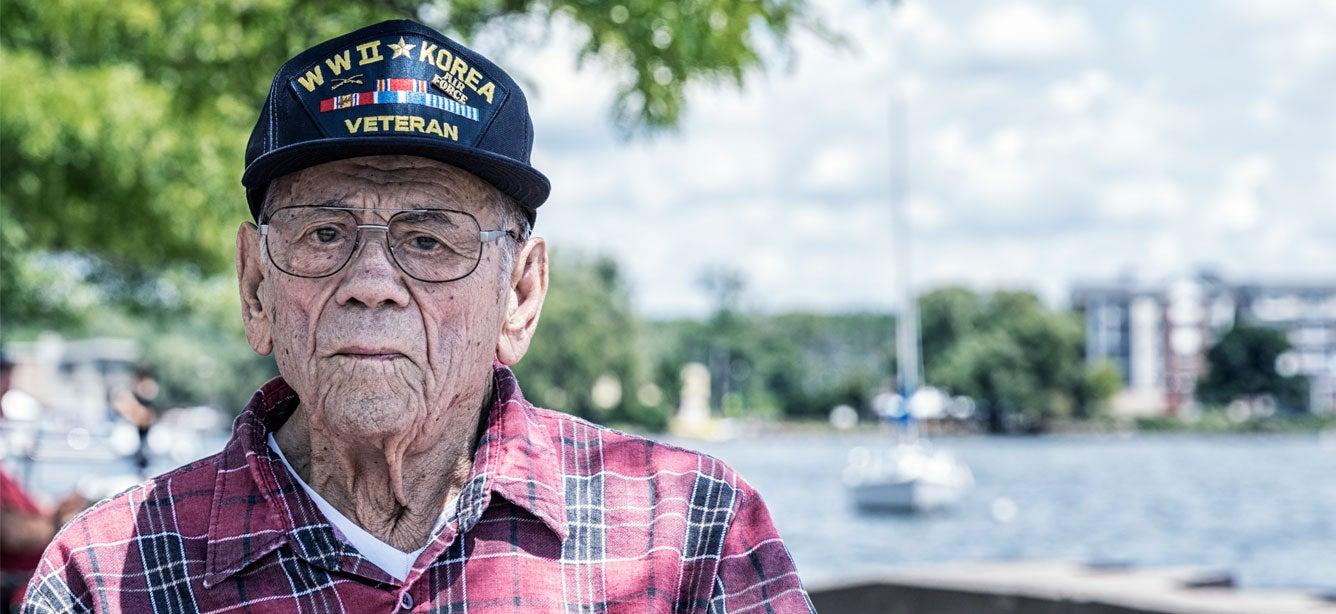Supporting New Evidence-Based Health Promotion Program Leaders through Initial Workshops and Beyond
8 min read

Being program leaders, coaches, or facilitators of evidence-based health promotion programs (EBPs) is a rewarding experience, positively impacting the well-being of program participants. These program leaders help people feel more in control of their health, from lowering the risk of falls to better managing chronic conditions, and help them build their confidence. Program leaders are the driving force for promoting healthy aging in our communities.
Most EBPs have their own fidelity guidelines, which are designed to be consistent and replicable in all settings. These guidelines require licensed organizations and program leaders to follow implementation manuals and receive specialized training. But there are some challenges that keep newly trained leaders from hosting their first workshops after receiving the required training.
What are some barriers to hosting the first workshop?
According to the current Administration for Community Living’s Falls Prevention and Chronic Disease Self-Management Education (CDSME) grantees who are promoting and implementing a variety of EBPs through their networks of community-based organizations (CBOs), most of them have challenges with newly trained leaders delivering their first workshop within the agreed-upon timeframe.
Some common challenges and barriers include:
- Organizational “buy in” to the programs, to include lack of committed resources to successfully implement a workshop.
- Lack of time. Newly trained leaders do not have the time allocated within their roles to plan and facilitate workshops.
- Unclear expectations and next steps to launch a workshop after leaders are first trained.
- Poor participant recruitment, leading to canceled workshops.
How to support new leaders from recruitment through workshop launch
It takes a village to help newly trained facilitators launch their first workshop.
See strategies below for both the organization sending staff to get trained and the organization hosting the training. A few thoughtful steps can help set everyone up for success.
Communicate expectations and time commitment clearly as a program leader before providing training opportunities
This is essential to both the individuals who are interested in becoming EBP leaders and their employers (when applicable): Having buy-in from both avoids misunderstanding about program implementation and ensures a more substantial commitment to implementing and sustaining the program.
- State requirements and expectations for potential leaders. Develop leader recruitment flyers with the summary of the program and required time commitment for the required leader training and workshops when announcing leader training.
- Interview leader candidates to go over requirements and expectations and answer any questions. Confirm that they can serve in the target community in the preferred program delivery modes.
- Execute memorandums of understanding (MOUs) with individuals and/or their employers (when applicable) before signing them up for program leader training.
To further reinforce the commitment, AgeOptions, serving as a community care hub in Illinois, has instituted a “deposit” fee structure, requiring the trainees to pay $100 to participate in the training. When they complete the required two workshops in 12 months after the training as agreed, the leaders receive the deposit back in full. This strategy has successfully decreased the number of trained people who never facilitate a workshop.
Schedule workshops prior to leader training (or as soon as possible after training concludes)
Having new leaders schedule their first workshop before they begin leader training or shortly after they complete it is the key to secure their commitment to schedule and facilitate workshop. It is also helpful to allow new leaders to observe or shadow an experienced leader for several workshops or to pair a new leader with an experienced leader for their first workshop.
Depending on how the host organizations manage their workshop schedules, there are several ways to facilitate scheduling for new leaders.
- Require leaders to have a workshop scheduled at a host location prior to completing leader training.
- Develop and maintain a master calendar with scheduled workshops for 3-6 months out with designated dates and times. New leaders are assigned to those scheduled workshops based on their availability. Then, find host sites to match the opportunities listed on your calendar.
- Recruit sites to host workshops, identify dates/times for workshop implementation and slate in trained leaders based on availability.
As your network of leaders grows, it may be helpful to create a collection of short training videos for onboarding leaders, as AgeOptions has done on key topics like how to set up your first workshops, host site recruitment, and participant recruitment.
Help new leaders with marketing and recruiting their participants
Having not only enough participants but also committed participants is the key to successful EBP workshops, especially when they are the first workshops for new leaders. Effectively and strategically marketing the programs in the target areas helps raise awareness about the programs and upcoming workshops. For new leaders, it may be overwhelming to facilitate a workshop for the first time. It also takes a collective effort to market and recruit participants throughout a network; participant recruitment cannot be done alone. If the capacity allows, support the leaders entirely in marketing and recruitment so that the leaders do not have to worry about them and focus on facilitating the program workshop.
Here are some strategies shared by the ACL CDSME and Falls Prevention grantees:
- Create a Marketing Toolkit. Develop and disseminate a marketing strategy and toolkit for your leaders and partner organizations network. These include flyers, brochures, posters, social media tiles, and videos. Make materials easily customizable so that each leader can include their workshop location, address, date, time, class frequency and duration, cost (if applicable), contact information, and most importantly, how to sign up for the workshops. Adding a QR code to these materials that links to a website for more information and registration may be helpful.
Centralizing the marketing strategies for your network of leaders and partners creates a brand with consistent messaging. Many states have implemented strategies to strengthen the marketing and branding of evidence-based programs, including the adoption of statewide program names such as “Living Well with Chronic Conditions” by the Wisconsin Institute for Healthy Aging, “PATH (Personal Action Toward Health)” by the National Kidney Foundation of Michigan, and “Healthy U” by the University of Wyoming. - Host Information Session/Session Zero for Potential Participants., Encourage leaders to host an information session, or “session zero” at their implementation sites. Experienced leaders can co-host this event to provide support and guidance to the new leaders as needed. Information sessions help interested individuals learn an overview of the program and expectations, ask any questions, and get to know their program leader, encouraging them to commit to completing the program. Without clarifying details, some participants may misunderstand the program and may not commit fully after the program has started. It is also important for leaders to meet and screen the participants to make sure they are a good fit for the workshop.
- Develop and Maintain a Centralized Program Information and Registration Website. Many organizations support new leaders through their websites by marketing and promoting all EBPs widely. These websites often include a workshop calendar within the network, allowing potential participants to learn about programs and register for a workshop scheduled at a time and location that is convenient for them. Here are some examples of state- or region-level centralized EBP information and registration websites:
Healthy Delaware
Michigan State University Extension
University of Texas Medical Branch
Path to Health New Mexico
National Kidney Foundation of Michigan
Mentor new leaders before and after the first few workshops
Frequent and constructive communication with new leaders leading up to and following their first workshop and beyond builds a stronger sense of accountability, partnership, and belonging. Communication and mentorship also ensure the quality and fidelity of the programs. Developing a mentorship program helps provide consistent and thorough support to all new leaders.
- Check in with a new leader periodically as they prepare for their first workshop to see how things are going. This can be done in a 5-minute phone call if they are ready. This is also a great opportunity for them to ask questions or bring up issues that you may be able to help resolve.
- Encourage new leaders to observe workshops led by experienced leaders. While the leader training may provide the context and flow of the programs, it is helpful to be present at the live sessions and observe how the workshops are facilitated and how participants are engaged. Each workshop has different dynamics depending on the leaders and participants, so it may be helpful to observe a few. This step is especially important if the new leaders have never participated in or led an EBP.
- Pair with an experienced leader to co-facilitate the first workshop if the program fidelity guideline allows. It’s less overwhelming for the new leaders, and perhaps for the participants, to have a leader who knows the program well and how to handle occasional difficult situations. An experienced leader can provide ongoing observation and constructive feedback and collaboratively work on areas of improvement while praising for positive performance after each session.
Provide ongoing support beyond the first workshops
One of the keys to program sustainability is building and maintaining the program delivery infrastructure and capacity. The core of solid delivery infrastructure is leader retention, which involves having active and dedicated master trainers and leaders across the target geographical area. Therefore, Host organizations should provide ongoing support and communication to retain trained leaders beyond their first workshops through various activities outside of leader training. Keep an organized master list of program leaders with their contact information, leader certification dates, and other helpful information.
Some examples from the field:
- Monthly or bi-monthly check-in meetings with all leaders in the network and/or individual leaders
- Monthly e-newsletters
- Public recognition of achievements and jobs well done
- Annual leader appreciation luncheon
- Financial support or incentives, especially for volunteers
- Opportunities for career growth, such as Master Trainer training opportunities, additional training opportunities related to public health
Supporting individual leaders from the beginning and cultivating a network of skilled and motivated leaders takes effort. Still, promoting and sustaining evidence-based health promotion programs in our community is fundamental.
This project was supported by the Administration for Community Living (ACL), U.S. Department of Health and Human Services (HHS) as part of a financial assistance award totaling $2,000,000 with 100 percent funding by ACL/HHS. The contents are those of the author(s) and do not necessarily represent the official views of, nor an endorsement, by ACL/HHS, or the U.S. Government.



